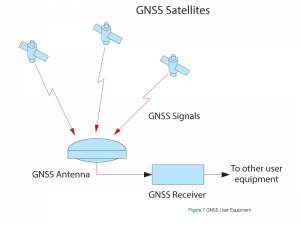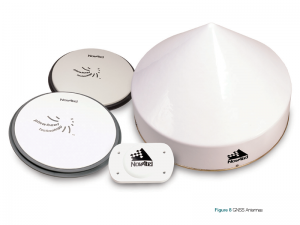Section 3
GNSS Applications
The first non-military applications of GNSS technology were in surveying and mapping. Today, GNSS is being used for commercial applications in agriculture, transportation, unmanned vehicles, machine control, marine navigation, and other industries where efficiencies can be gained from the application of precise, continually available position and time information. GNSS is also used in a broad range of consumer applications, including vehicle navigation, mobile communications, entertainment and athletics. As GNSS technology improves and becomes less expensive, more and more applications will be conceived and developed.
In addition to position, GNSS receivers can provide users with very accurate time, by “synchronizing” their local clock with the high-precision clocks onboard the satellites. This has enabled technologies and applications such as the synchronization of power grids, cellular systems, the Internet and financial networks.
We’ll talk more about GNSS applications in Chapter 8.
GNSS User Equipment
The primary components of the GNSS user segment are antennas and receivers, as shown in Figure 7. Depending on the application, antennas and receivers may be physically separate or they may be integrated into one assembly.
GNSS Antennas
GNSS antennas receive the radio signals that are transmitted by the GNSS satellites and send these signals to the receivers. GNSS antennas are available in a range of shapes, sizes and performances. The antenna is selected based on the application. While a large antenna may be appropriate for a base station, a light weight, low-profile aerodynamic antenna may be more suitable for aircraft or Unmanned Aerial Vehicles (UAV) installations. Figure 8 presents a sampling of GNSS antennas.
GNSS Receivers
Receivers process the satellite signals recovered by the antenna to calculate position and time. Receivers may be designed to use signals from one GNSS constellation or from more than one GNSS constellation. As illustrated in Figure 9, receivers are available in many form factors and configurations to meet the requirements of the varied applications of GNSS.
We will talk more about GNSS equipment in Chapter 8.
GNSS Augmentation
Positioning based on standalone GNSS service is accurate to within a few metres. The accuracy of standalone GNSS, and the number of available satellites, may not be adequate for the needs of some users.
Techniques and equipment have been developed to improve the accuracy and availability of GNSS position and time information. We will discuss some of these techniques in Chapter 4.
Closing Remarks
Chapter 1 provided an overview of the main concepts and components of GNSS. This high-level summary will help your understanding as we present GNSS in greater detail, starting with a more thorough look at basic GNSS concepts in Chapter 2.



